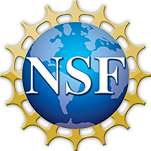Abstract
Background
The Caldanaerobacter subterraneus species includes thermophilic fermentative bacteria able to grow on carbohydrates substrates with acetate and L-alanine as the main products. In this study, comprehensive analysis of three genomes of C. subterraneus subspecies was carried in order to identify genes encoding key metabolic enzymes and to document the genomic basis for the evolution of these organisms.
Methods
Average nucleotide identity and in silico DNA relatedness were estimated for the studied C. subterraneusgenomes. Genome synteny was evaluated using R2CAT software. Protein conservation was analyzed using mGenome Subtractor. Horizontal gene transfer was predicted through the GOHTAM pipeline (using tetranucleotide composition) and phylogenetic analyses (by maximum likelihood). Hydrolases were identified through the MEROPS and CAZy platforms.
Results
The three genomes of C. subterraneus showed high similarity, although there are substantial differences in their gene composition and organization. Each subspecies possesses a gene cluster encoding a carbon monoxide dehydrogenase (CODH) and an energy converting hydrogenase (ECH). The CODH gene is associated with an operon that resembles the Escherichia coli hydrogenase hyc/hyf operons, a novel genetic context distinct from that found in archetypical hydrogenogenic carboxydotrophs. Apart from the CODH-associated hydrogenase, these bacteria also contain other hydrogenases, encoded by ech and hyd genes. An Mbx ferredoxin:NADP oxidoreductase homolog similar to that originally described in the archaeon Pyrococcus furiosus was uniquely encoded in the C. subterraneus subsp. yonseiensis genome. Compositional analysis demonstrated that some genes of the CODH-ECH and mbx operons present distinct sequence patterns in relation to the majority of the other genes of each genome. Phylogenetic reconstructions of the genes from these operons and those from the ech operon are incongruent to the species tree. Notably, the cooS gene ofC. subterraneus subsp. pacificus and its homologs in C. subterraneus subsp. tengcongensis and C. subterraneus subsp. yonseiensis form distinct clades. The strains have diverse hydrolytic enzymes and they appear to be proteolytic and glycolytic. Divergent glycosidases from 14 families, among them amylases, chitinases, alpha-glucosidases, beta-glucosidases, and cellulases, were identified. Each of the three genomes also contains around 100 proteases from 50 subfamilies, as well about ten different esterases.
Conclusions
Genomic information suggests that multiple horizontal gene transfers conferred the adaptation of C. subterraneus subspecies to extreme niches throughout the carbon monoxide utilization and hydrogen production. The variety of hydrolases found in their genomes indicate the versatility of the species in obtaining energy and carbon from diverse substrates, therefore these organisms constitute a remarkable resource of enzymes with biotechnological potential.

